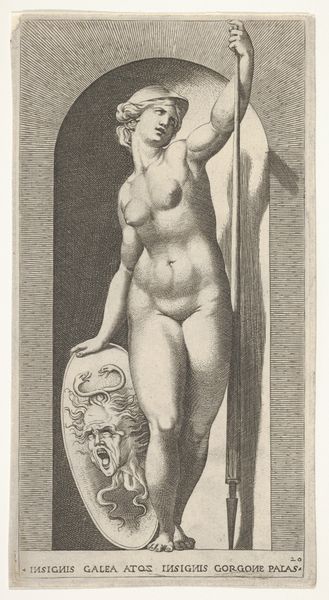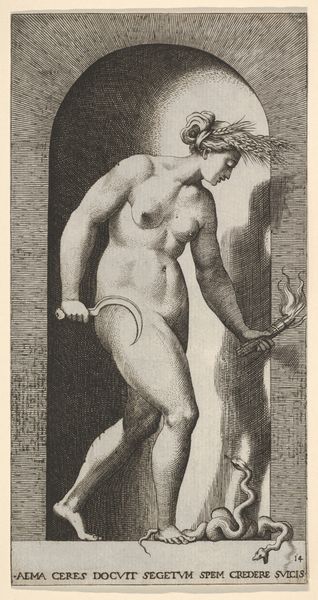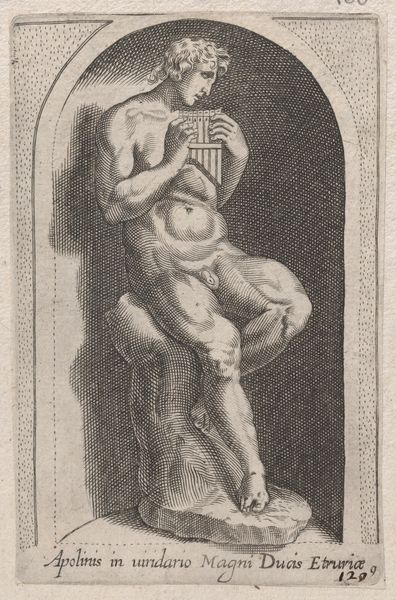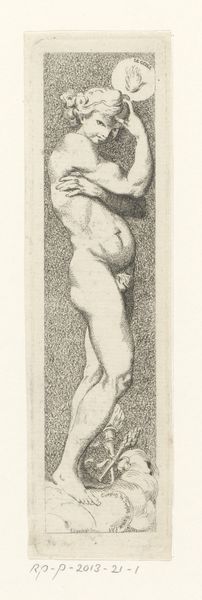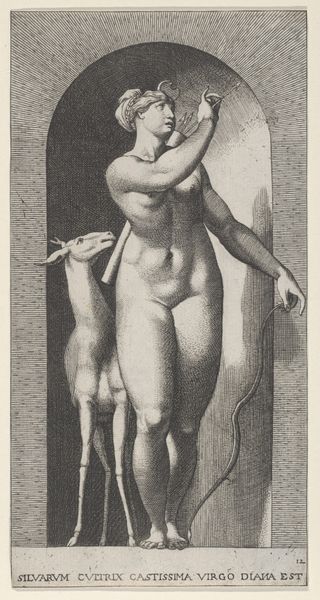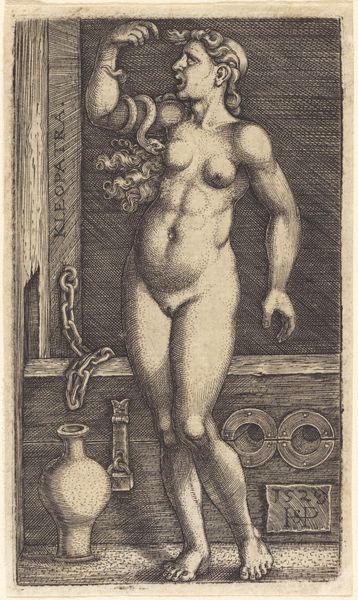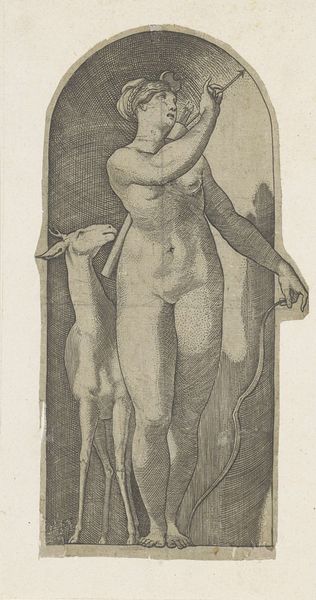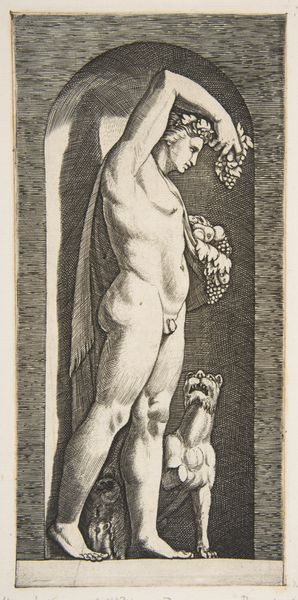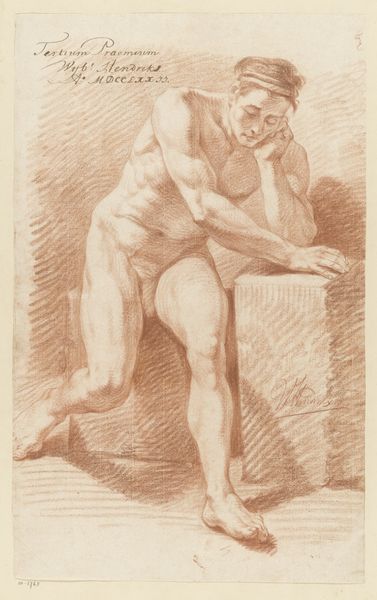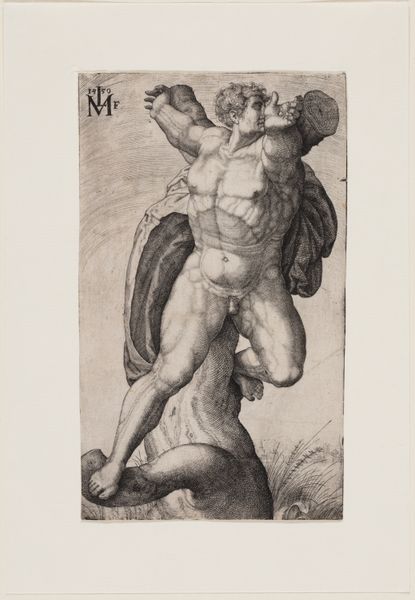
Olympus naked seated on a tree stump holding pipes, set within a niche 1510 - 1532
0:00
0:00
drawing, print, intaglio, engraving
#
drawing
# print
#
intaglio
#
figuration
#
academic-art
#
italian-renaissance
#
nude
#
engraving
#
male-nude
Dimensions: Sheet (Trimmed): 9 1/8 × 4 3/16 in. (23.2 × 10.7 cm)
Copyright: Public Domain
Editor: This is an engraving by Marco Dente, made sometime between 1510 and 1532, titled "Olympus naked seated on a tree stump holding pipes, set within a niche." The starkness of the figure, and the precise lines of the intaglio, make it a study in contrasts. What do you see when you look at this piece? Curator: Formally, the piece presents a fascinating study in the interplay of light and shadow. Note how Dente uses hatching and cross-hatching to sculpt the figure's musculature, creating volume and depth. The sharp contrast between the illuminated figure and the shaded niche emphasizes the three-dimensionality of the subject. The figure's contrapposto pose adds dynamism and visual interest, further engaging the eye. How does the figure's gaze influence your interpretation of the piece? Editor: I hadn't considered the contrapposto. His downward gaze does seem to make him introverted or pensive, contrasting with his nakedness and the implied sound of the pipes. The detail of his toes is interesting too. Does it seem idealized for the time? Curator: The slight elongation of the figure is indeed reminiscent of Mannerist tendencies that began to emerge in the later Renaissance. Though Dente closely followed the composition and style of Raphael, and the subject follows an earlier prototype, we see this artistic interpretation influencing the visual language. Considering that visual element in relation to the thematic elements, how does this refinement of forms shift the content’s semiotic impact? Editor: That’s interesting to consider. It pulls in so many different layers of understanding to focus just on the form itself. Curator: Exactly. Appreciating how the details contribute to a deeper and more holistic perception enriches the art experience. Editor: Thanks for your perspective! It highlights a whole range of things I never noticed.
Comments
No comments
Be the first to comment and join the conversation on the ultimate creative platform.
